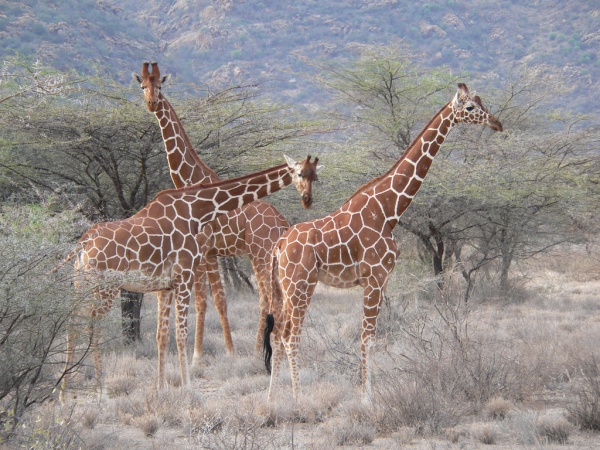Facts About Reticulated giraffe
The reticulated giraffe, also known as the Somali giraffe, is a distinctive subspecies native to the Horn of Africa, found primarily in Somalia, southern Ethiopia, and northern Kenya. There are approximately 8,500 individuals remaining in the wild today. This subspecies was first described in 1899 by British zoologist William Edward de Winton. Although reticulated giraffes can interbreed with other giraffe species both in captivity and in the wild, the International Union for Conservation of Nature (IUCN) recognizes one species of giraffe, divided into nine different subspecies.
Reticulated giraffes are particularly popular in zoos, often seen alongside Rothschild's giraffes. They are easily identifiable by their striking coats, which feature large, liver-colored patches delineated by bright white lines. These gentle giants hold the title of the tallest land mammals on Earth.
Historically, reticulated giraffes roamed extensively across Northeast Africa, favoring habitats such as savannas, woodlands, seasonal floodplains, and even rainforests. Today, conservation efforts are crucial to protect their dwindling population. One such initiative is "Twiga Walinzi" by San Diego Zoo Global, which focuses on safeguarding these giraffes.
In the zoo community, reticulated giraffes are a significant attraction. Some zoos maintain separate herds of Rothschild's or reticulated giraffes. For instance, the Cheyenne Mountain Zoo in Colorado Springs boasts the largest herd of reticulated giraffes in North America. Although some zoos previously bred Rothschild's and reticulated giraffes together, recent studies indicate that these subspecies do not interbreed in the wild. Consequently, many zoos now opt to keep and exhibit either solely reticulated giraffes or solely Rothschild's giraffes.

 Ethiopia
Ethiopia